Succulents do grow tall. But not all of them. There are types of succulents that grow taller than others. In most cases, succulents grow tall in the absence of sunlight. Succulents are light-loving plants. They need light to grow in the way they should grow naturally.
If your succulent is placed indoors, it is possible that it demands sunlight to avert further stretching, while searching for light. Seasons can also affect your growing succulents–in winter they struggle with light, and if they aren’t dormant (which is the case of many succulents in winter), they may grow even taller. But perhaps you want a succulent that grows tall. Maybe that’s what will fit best to your garden or room with high ceiling. Let’s have a look at the list!
Table of Contents
No .1 Fishhook Barrel Cactus
This type of succulent can grow taller than you expect. It is commonly found in rocky mountainous regions. This type is abundant in Arizona, Southwestern New Mexico, limited extremes of Western Texas, Sonora, Northwest Chihuahua, and Northern Sinaloa, Mexico. You can buy it on Amazon here.
Fishbook barrel does not need “babysitting”. It is an easy plant to propagate in and around the Tucson area. It requires little attention and no special care. It is perfect for home decor and can fit in any garden setting. It has a high tolerance to both heat and cold, down to 10 degrees Fahrenheit. That’s because such are the conditions in its native land. You can propagate this cactus by seed. Size: 30 inches in diameter and 12 feet tall with a Globular shape.
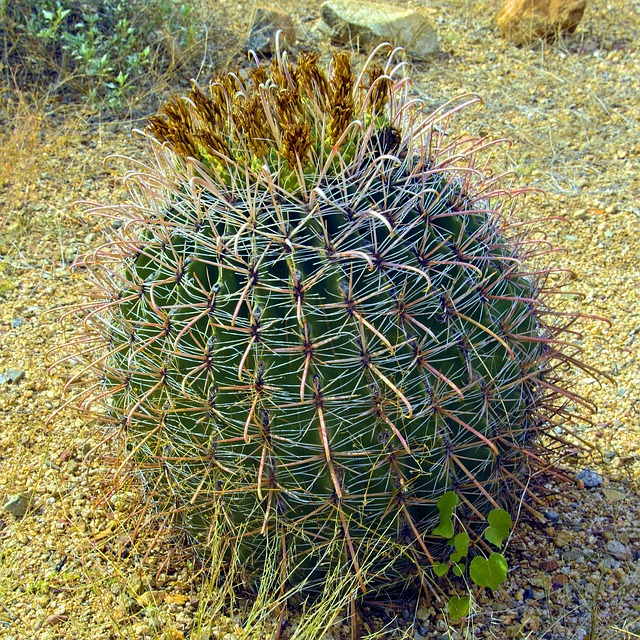
No. 2 Golden Barrel Cactus
This popular barrel cactus is known for its beautiful golden yellow spines that thickly surround the dark green to moss green body. As a common characteristic of Echinocactus, the crown or top of the stem is clothed by compact white or slightly cream-colored hair that is more striking on older and larger plants.
The Golden Barrel has quickly become one of the most commonly purchased plants for home landscape in Tucson. It is a simple plant to grow and takes no special care. Most plants are purchased at a moderately nice size and can be easily transplanted to a garden landscape or a decorative container. It is not that very fast grower but it can reach an extremely large size. Click here to get this amazing plant from Amazon.
Size: 24 inches wide and 40 inches tall with a Globular shape.
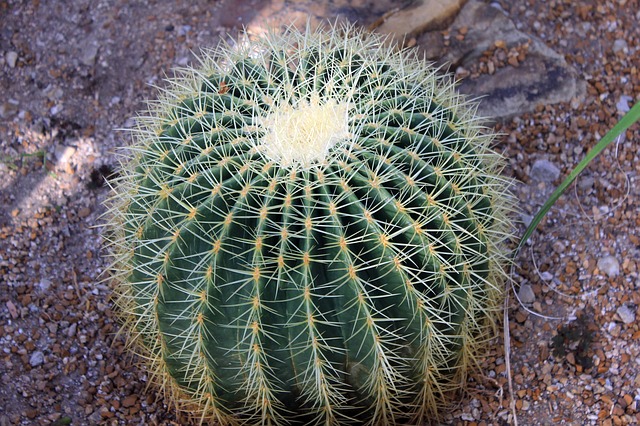
No. 3: Ocotillo
Ocotillo is a drought-tolerable shrub. It can have 6 to 100 wand-like branches that grow from the root crown. The growth rate is very slow. This pant can sustain harsh conditions. It can be dug up and transplanted later on even after many days out of the soil. To ensure good health, it is suggested to plant your Ocotillo deep enough for sufficient support and to keep the long slim stems moist with a garden hose until it is well deep-rooted.
Size: Stems can grow anywhere from 9 to 30 feet tall with spines to 1.5 inches long, spread to 15ft. It has a Clustering form. You can get this plant from Amazon.
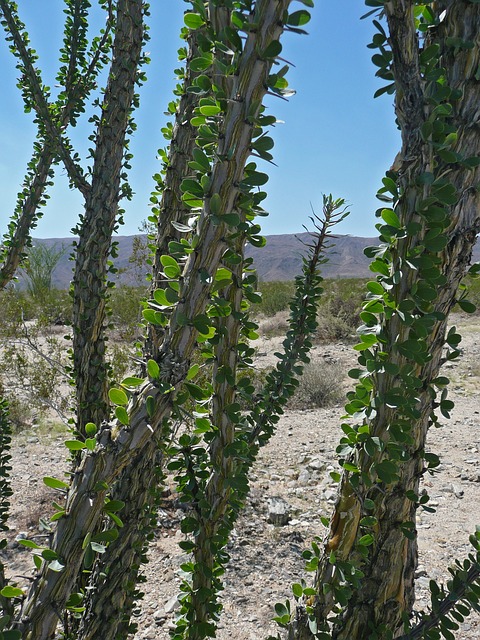
No. 4: Palmer’s Agave
This type of succulent is slightly misunderstood in that younger plants usually do not point. However, as the plant ages it will often send out many small stalk points. Characteristically, this Agave grows in areas covered by the oak woodlands from 3,000 to 6,500 ft. above limestone soils.
Agave Palmeri is a kind of slow-growing succulent that is very easy to cultivate. It can stand temperatures as low as 10 degrees Fahrenheit or lower but usually requires more humus soil than regular desert plants. The type of its propagation is by seed or rhizome offsets (stalk points). It only requires little attention and care.
Size: Medium-sized species 3.25-4 ft. and 20-47 in. wide with a Rosette shape of form.
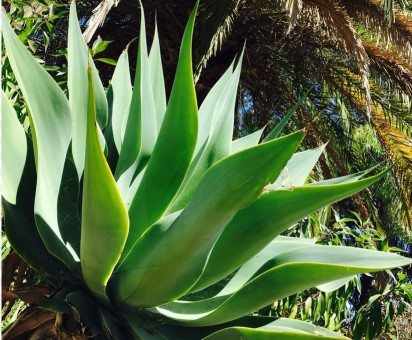
No. 5: Saguaro Cactus
The splendid Saguaro Cactus also tagged as the state flower of Arizona is composed of a tall, thick, fluted, columnar stem ranging from 18 to 24 inches in diameter, frequently with several large branches (arms) curving upward in the most typical shape of all Southwestern cacti.
Size: 35 inches wide and up to 50 feet tall with a Columnar-shaped branches
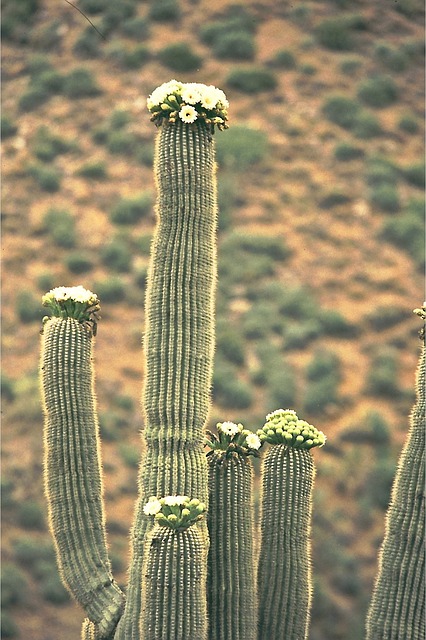
No. 6: Hedge Cactus/Queen of the Night
This plant has long columnar stems that have 5 to 7 ribs. The stems are bluish-green or dull gray-green color. Spines when present are short and brown to black in color. It is found throughout Southern Brazil and particularly in and around the city of Rio de Janeiro. You can also spot it in adjacent countries such as Argentina, Uruguay, and Paraguay.
This type of succulent has been in enculturation for many years and has been usually occupying lots of gardens. It is easy to find and to grow and has no problems adapting to any garden type. The propagation of this plant is also easy. It is by seed or by stem cuttings. You can get this plant from Amazon.
Size: 30 or more feet in height, and sometimes forming large columnar bushes.
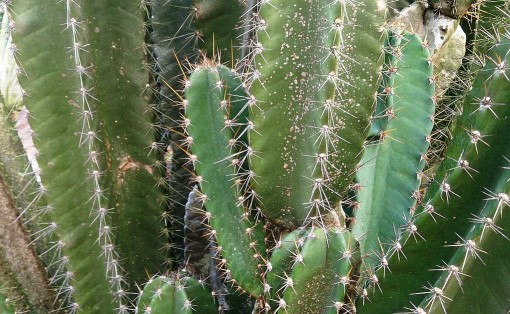
No. 7: Senita, Old Man Cactus or Whisker Cactus
The stems of the Senita are kind of bluish-green or gray-green color with white spines that will, later on, turn to a darker gray color and will form along with bristle-like display at the top portion of the plant.
The Senita is easy to grow, although it is sensitive to heavy frost or freezing conditions. It is suggested to protect the stems with a frost protective covering on very cold periods. It has a high tolerance to heat, dry conditions and needs little extra care in most garden landscapes.
Size: 20 feet in height and over 15 feet in diameter with up to 50 or more stems with Columnar stems. Flowers are seen at the upper portion of the plant and these are commonly white at the center with a pink touch at the outer ends of each petal. You can again get this plant from Amazon.
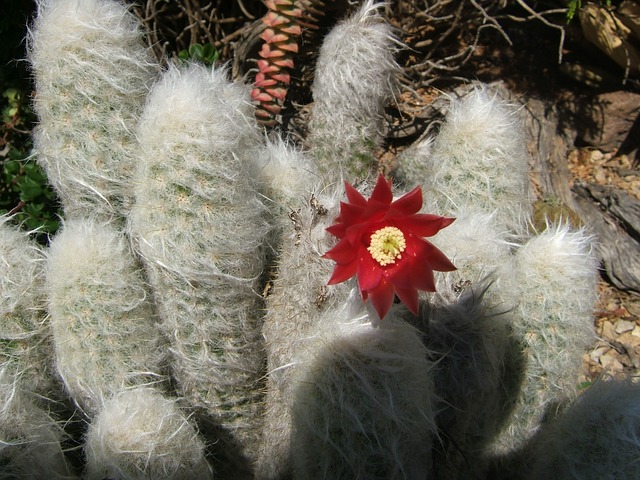
No. 8: Hedgehog Cactus
This Echinocereus type cactus is known for being abundant in arid and dry areas, and the dark brown central spine close to the top of the stem makes it easy to identify.
A very easy plant to grow in a dry-type garden. This plant is one of the native cacti and can survive with very little care. The propagation of this is by seed and offset stem cuttings. Size: 24 inches wide and 18 inches tall with a clustering shape.
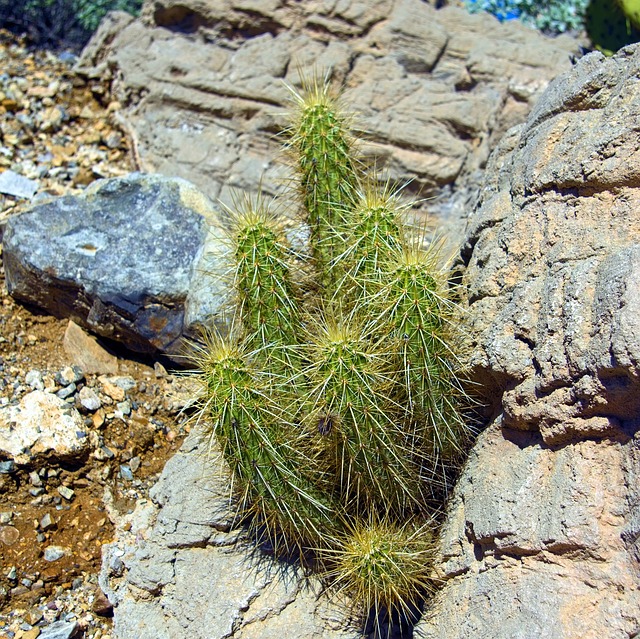
No. 9: Arizona Fishhook Cactus
This Mammillaria type cactus is very common in and around Arizona and it is known for the quite thin, short, black hooked spines. It has a magnificent beautiful pink to dark magenta flowers. It also has edible fruit. The fruit is about 1/4 to 3/4 inches long and stands out from the plant like little red chilies.
A good choice plant for a sunny patio container location or as an additional beautification to the garden. Being a local native, it is a very much carefree plant and requires a little amount of attention except for container culture. You canget this plant from Amazon, together with three other cacti, for an amazing price.
Size: 9 inches in height and 4 inches wide. Clustering plants can be much wider.
No. 10: Burbank’s Spineless Cactus
Burbank’s Spineless Cactus or the Burbank Prickly Pear can be seen by everyone driving around the cities in the Southern part of America. This plant has been in heavy cultivation for a number of years and it became readily available in some parts of Asia. It is a spineless plant with large, thick, flat joints usually about 12 to 20 inches long. Most plants have a central growing point or trunk and are sometimes extremely massive in size.
It is an extremely carefree plant for any garden type. It can be easily grown from cuttings and requires no special soil. It can take full sun as well as partial shade and it is fast to establish and grow.
Size: 15 feet in height and over 10 feet in width with Padded/Jointed shape or structure.
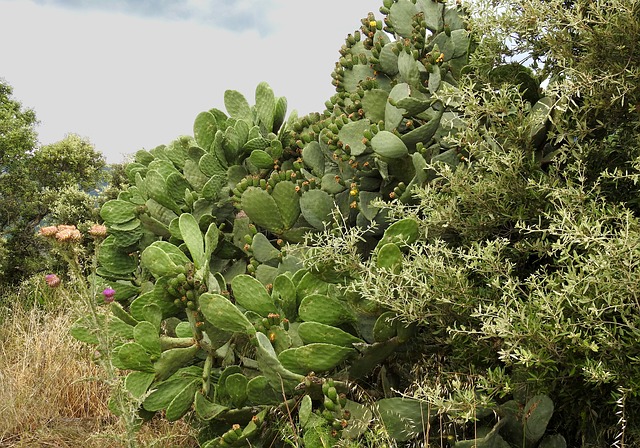
FAQ
Q: How to make your succulents grow faster?
A: You can try is to leave a little more space between your succulents and they’ll grow a bit faster, although they are slow growers in nature and over time they’ll fill in. Too much space can cause the succulents to focus on producing roots rather than getting larger.
Q: Is dragon fruit a succulent?
A: Dragon Fruit Plant is a tall succulent fruit-bearing plant that is probably from cultivars of Selinicereus megalanthus (yellow-skinned, white-fleshed) or Hylocereus. To learn everything you need to know about succulent growing, please check my complete guide on how to grow succulents.
